#native instruments m32
Explore tagged Tumblr posts
Text
Studio 2023
So here's my studio setup going into 2023-2024:
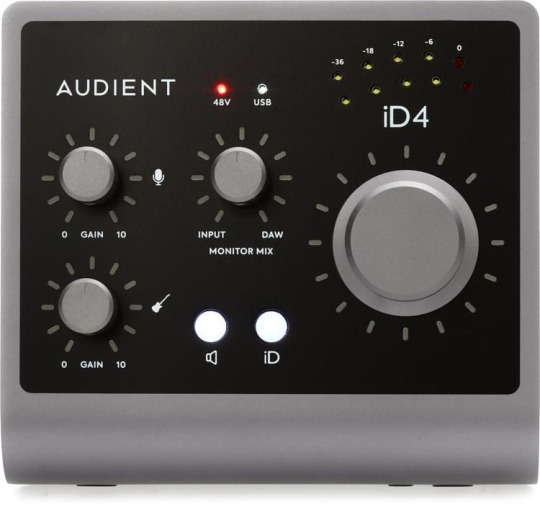
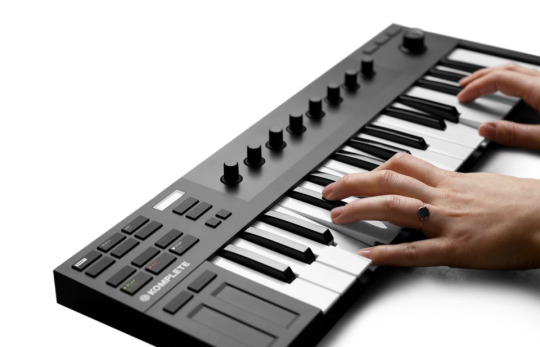
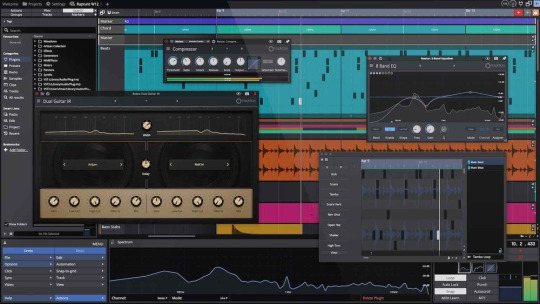
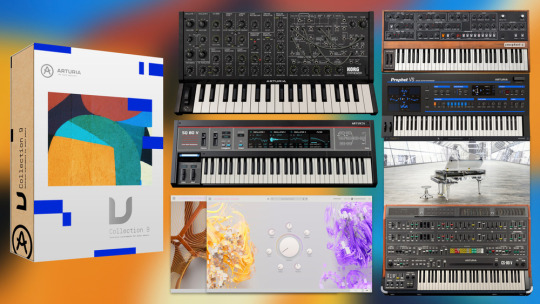
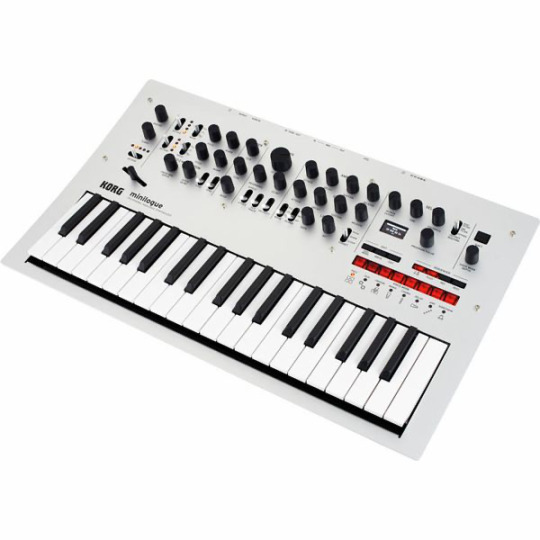
#music production#korg#minilogue#arturia V collection 9#tracktion waveform 12#native instruments m32#audient id4
3 notes
·
View notes
Text
youtube
[Members only] TAKEO SUZUKI's composition process / Electronica,IDM no,0422|Logic Pro X
"This video is for members only. You can view all videos by subscribing to the "All Contents" membership. "
I will reveal my composition process. For production, I use Apple Logic Pro X as my DAW. Publish the screen capture (note-talking).
This song is a demo created with electronica, Experimental Ambient, IDM, etc. in mind. It has not been decided whether this song will be released.
|| Equipment ||
DAW: Apple Logic Pro X 10.8.1
Computer: Apple M1 MacBook Air (16GB memory, 1TSSD)
Audio interface: MOTU M2, ZOOM AMS24
Main speaker: Fostex NF-1A
Subwoofer: Fostex PM-SUBmini2
Headphones: YAMAHA HPH-MT8
Microphone: BEHRINGER B-1
MIDI keyboard: Native Instruments KOMPLETE KONTROL M32
1 note
·
View note
Text
Portable Midi Keyboard
Travel companion Portable Midi Keyboard for instantly producing music no matter where you are 😎
Portable midi keyboards are under rated and can be a great help to sketch ideas on the go. Two portable midi keyboard makes a great entry level segments to get you started producing music using Macbook Pro. Native Instruments Komplete m32 and Arturia Minilab both offers great value for the asking price. Here focus is on portability rather than more functions and luxury of able to enjoy weighted…
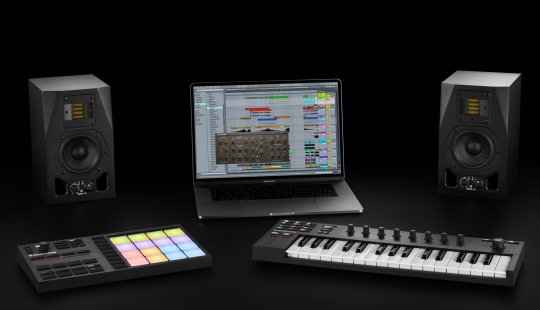
View On WordPress
0 notes
Text
Best midi keyboards 2022
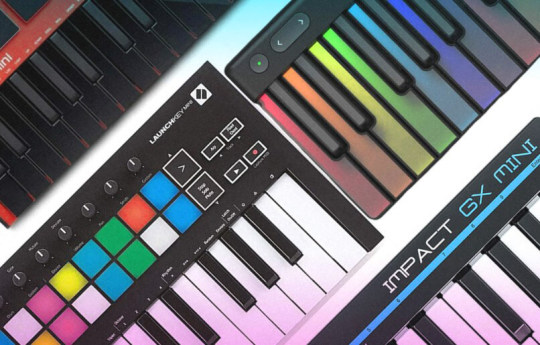
A MIDI controller keyboard is an essential piece of equipment in any studio. The best MIDI controllers can take your recordings to a whole new level. If you're not sure where to start, we've got all the information you need right here. USB-based MIDI controllers offer an easy and convenient way to play and record software instruments with your computer. They can be plugged directly into your PC or laptop via USB, or in some cases they can operate wirelessly over Bluetooth. This makes them a central performance hub for your studio, allowing you to play and record software instruments with ease. Some MIDI controllers also double up as a control interface for hardware synths, making them an essential piece of kit for any producer or musician. There are a variety of different MIDI keyboards to choose from, depending on your needs. You can go for a smaller, more portable model that fits comfortably in a laptop bag, or you can go all out with a full-sized 88-note keyboard with weighted keys. The most important factors to consider include the number of keys (some models have 88 keys, while others have fewer), the type of action (weighted keys or not), and whether or not you need additional features such as knobs, pads, buttons and faders. When shopping for a MIDI keyboard, it's important to consider what you need in order to make the best purchase. You can get a cheap model for less than $100 if you look around, but if you're looking for a higher quality option with more features, you'll likely have to spend a bit more. In general, MIDI keyboards that cost more tend to be more rugged and able to stand up to travel. So, if you're looking for something to take on the road with you, it might be worth spending a bit more. Finding the right one for you can be a daunting task. With so many options available, it can be hard to know where to start. Our price comparison widgets have found the best deals online right now, so you can be sure you're getting the best possible price. If you need more guidance, head to the buying advice section at the bottom of the page. There, you'll find tips and advice on how to find the perfect product for your needs.
The list of the best midi keyboards - our choice
- Nektar SE25 MIDI keyboard - Novation Launchkey Mini Mk3 MIDI keyboard - Akai MPK Mini Mk3 - IK Multimedia iRig Keys 2 Mini - Native Instruments Komplete Kontrol M32 - Korg microKEY2 Air-25 - M-Audio Oxygen 49 MKV - Novation Launchkey 37 Mk3 - Arturia Keystep 37 - Native Instruments Komplete Kontrol A25 - IK Multimedia iRig Keys I/O 49 - Nektar Impact LX88+ MIDI keyboard - Arturia Keystep Pro - Arturia KeyLab 49 MkII MIDI keyboard - Novation 49 SL MkIII - Native Instruments Komplete Kontrol S61 MkII - Roland A-88MKII - ROLI Lumi Keys Studio Edition - M-Audio Keystation 88 MK3 - M-Audio Oxygen MKV 61 - Nektar Impact GX Mini - CME XKey 25 - Nektar Impact GX49/61 - M-Audio Keystation 49/61 MK3 - NI Komplete Kontrol A49 - Keith McMillen QuNexus - Alesis V61 - Nectar SE49 - Roli Seaboard
MDI keyboard selection criteria
The best piano replacements don't have to strictly follow the 88 weighted key rule. There are many great pianos that don't follow this rule, and can still produce beautiful music. So, don't be afraid to choose a different type of piano if it speaks to you. Ultimately, the best piano for you is the one that you feel most comfortable playing and that makes you happy. What are we looking for: - High build quality; - Soft touch keys; - Pitch-bend and modwheel; - Velocity/pressure sensitivity. Choosing a MIDI keyboard can be a difficult process, especially if you don’t know what to look for. There are a few important factors you need to consider, such as the build quality and playability of the keyboard. This list is short due to those factors, but it will ensure that any recommendation we make will feel well-built and playable. You won’t regret your purchase if you take these factors into consideration. When it comes to MIDI controllers, there are a few different things you'll need to decide on before making a purchase. The first decision is the keybed size- some controllers come in miniature 25-key sizes, while others are full sized with 88 keys. Aside from the number of keys, the controllers are essentially the same. The following parameters will need to be guided subjectively at your own discretion: - Number of Keys. The number of keys on a keyboard can affect its price and bulkiness. More keys mean a higher price and more bulk, which might be unnecessary if you’re not playing classical pieces. 49 keys are good enough for synthesizer-focused players, whereas 61 keys are a good amount for keyboardists who need; - Key Type. Synth-action keys are the most common type of keys found on digital pianos. They are generally more lightweight and responsive than weighted keys, but still provide a sense of resistance that is often desired in piano playing. Weighted keys, on the other hand, offer a heavier touch that can be more advantageous for certain types of music. Semi-weighted keys are a rarer option that falls somewhere in between the two, offering players the best of both worlds in terms of responsiveness and resistance; - Number of Controls. It's good to have knobs and buttons for assigning software functions with MIDI Learn, but most of us don't need a full digital mixing board. If we did, we'd be buying something else. Knowing what you need is key. If you don't need the controls, you can get the same keybed on the Nektar SE49, which is a stripped-down version of the Nektar GX49. Knowing what you need is key to getting the right product; - Number of Controls. It's good to have knobs and buttons for assigning software functions with MIDI Learn, but most of us don't need a full digital mixing board. If we did, we'd be buying something else. Knowing what you need is key. If you don't need the controls, you can get the same keybed on the Nektar SE49, which is a stripped-down version of the Nektar GX49. Knowing what you need is key to getting the right product; - Aftertouch is one of the most unique and expressive features on a keyboard. Unlike typical pressure sensitivity, aftertouch continues to detect how hard you’re pushing down until you let go. This can be used to add extra layers of expressivity to your performances on instruments like organs, where aftertouch can be assigned to control the rotary speaker speed; - 5-Pin MIDI Support. If you're using a MIDI controller that doesn't have a MIDI port, you can use a USB MIDI interface to send MIDI signals through a traditional 5-pin MIDI cable. However, this can be inconvenient because USB ports are limited on laptops. Here's an example of how to connect a USB MIDI controller to legacy hardware: USB MIDI Keyboard -> Computer -> USB MIDI Interface -> 5-Pin MIDI Cable -> Legacy Hardware. Although it's possible to use USB MIDI controllers without a MIDI port, it's not as straightforward; - Pads. Pads are an important part of a keyboard, but they are not a necessary component. They are essentially larger buttons, which can be helpful for playing on a main keyboard. Finger drumming is a popular activity, but I find that keyboard-drumming is more precise. Your own experience may vary; - Pedal Support. When looking for a keyboard, it's important to consider whether or not the model has a pedal jack. Not all keyboards have this feature, particularly the smaller, portable 25-key models. However, it's always better to be safe than sorry, so it's best to make sure that the model you're interested in includes pedal support. This can be either through a proprietary jack or otherwise; - Software Support. MIDI controllers that are designed to integrate well with specific software can be a great option for musicians who want the best possible experience with their music-making tools. By choosing a controller that is specifically tailored to work well with your software, you can eliminate many of the compatibility issues that can arise when using different programs. This can lead to a smoother, more efficient workflow and help you get the most out of your music-making.
Best MIDI-keyboards reviews
1. Nektar SE25 MIDI keyboard

Compatibility: PC, Mac No of Keys: 25 Key size: Mini Key type: Velocity-sensitive Controls: 6 function keys; assignable PB1 & PB2 buttons for pitch bend, transpose, volume, pan & track; assignable ‘Part Two’ button for octave, MIDI channel, transpose, layer & latch; S button for sustain & modulation Connectivity: Micro USB port, sustain pedal input Power: USB Software: Bitwig 8-Track Dimensions (mm): 335 x 100 x 2 Weight (kg): 0.4 A MIDI controller keyboard can be an essential item if you're always making music on the go. The Nektar SE25 proves that features and playability don't need to be sacrificed for the sake of size and portability. This MIDI controller is small enough to fit in a laptop bag, but it still has 25 keys with full-size velocity and aftertouch. There's also a 4-way joystick for pitch and mod control, as well as buttons, knobs, and faders for even more control over your sound. Plus, the SE25 is USB powered, so you can just plug it into your laptop or computer and start making music right away. If you're looking for a small MIDI keyboard and don't want to break the bank, Nektar's new SE25 is well worth considering. It's not the cheapest option out there, but it offers good value for money, and we found it to be thoroughly impressive during testing. It's a simple, compact product, but it does everything you need it to do - no more, no less. 2. Novation Launchkey Mini Mk3 MIDI keyboard
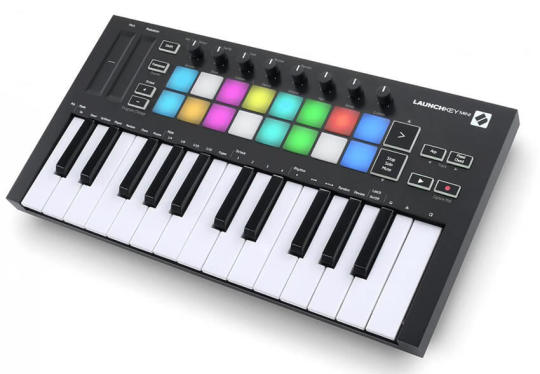
Compatibility: PC, Mac, iOS No of Keys: 25 Key size: Mini Key type: velocity-sensitive Controls: Octave shift, Transpose, Pitch and Modulation strips, 16 velocity-sensitive backlit RGB launch pads, 8 rotary encoders, 10 function buttons Connectivity: USB B port, 3.5mm TRS Type A MIDI out, Sustain Pedal input Power: USB Software: Ableton Live Lite, two months of Splice Sounds, AAS Session Bundle, Softube Time & Tone, Spitfire Audio LABS Expressive Strings, Klevgrand DAW Cassette and R0Verb, XLN Audio Addictive Keys, membership of Novation Sound Collective Dimensions (mm): 330 x 172 x 40 Weight (kg): 0.69 The Launchkey Mini Mk3 is a powerful pocket-sized controller that is packed with features. Many of these features were missing from the previous version, including pitch bend and modulation touchstrips, a hardware MIDI out on a TRS jack, an incredibly flexible and versatile arpeggiator, a chord memory feature, and a great software bundle. The Launchkey Mini Mk3 is a great keyboard controller for Live users, but it doesn't work perfectly with every DAW. If you're looking for the best solution at this price point, the Launchkey Mini Mk3 is definitely the way to go. The Launchkey Mini MK3 is a great choice for a small, velocity-sensitive MIDI keyboard. It has an impressive range of connectivity options, making it perfect for traveling or using in a variety of settings. 3. Akai MPK Mini Mk3

Compatibility: Mac/PC/iOS No of Keys: 25 Key size: Mini Key type: velocity-sensitive Controls: Eight assignable encoders, eight MPC pads, full transport controls, 4-way joystick Connectivity: USB Power: Bus-powered Software: MPC Beats, Bassline, Tubesynth, Electric, Hybrid 3, Mini Grand, Velvet Dimensions (mm): 32 x 18 x 4 cm Weight (kg): 750g The Akai MPK Mini Mk3 is a great MIDI keyboard for most people, particularly those looking for a quick and easy way to add melodies, basslines and simple chords to their projects. It's small and easy to use, with a ton of features that make it perfect for musicians of all levels. The MPK Mini MK3 is much more than just a keyboard. It also has eight encoder knobs which can be easily mapped to any parameter of your DAW, and eight full-sized MPC style drum pads. This makes it an ideal controller for studio use or live performances. At its heart, the Nano studio is a portable production powerhouse. Its small size makes it easy to transport, while its wealth of features and functions make it a valuable addition to any studio setup. Whether you need to record vocals, guitars, or other instruments, the Nano studio has you covered. Plus, its intuitive controls make it easy to use, even for beginners. So if you're looking for a versatile and portable recording solution, the Nano studio is definitely worth considering. 4. IK Multimedia iRig Keys 2 Mini

Compatibility: Mac/PC No of Keys: 25 Key size: Mini Key type: Velocity sensitive Controls: Volume, Octave up/down buttons, Program up/down buttons, Setup button, assignable data push encoder, 4+4 assignable knobs, Modulation Connectivity: MIDI in/out, micro-USB, 1/8" headphones output Power: USB Software: iOS SampleTank, Syntronik Pro-V Cubasis LE. Mac/PC: SampleTank 4 SE plus one of your choice from seven titles Dimensions (mm): 32 x 14 x 5 cm Weight (kg): 0.58kg The Keys 2 Mini 25 is a small and affordable keyboard that has 25 mini keys. It is one of the smallest and cheapest models in the iRig Keys range, which also features keyboards with 37 mini keys and Pro (37 full-sized key) options. Mini 2 25 is small enough to place on any desktop, and it is sturdy enough to stay in place. It also features direct connectivity to iOS devices. The keyboard has a variety of controls that you can use to customize your sound. These include the standard controls such as volume and pitch, as well as more advanced options like MIDI assignments and editing. The keyboard also has a set of program buttons, assignable rotaries, and a data knob to give you easy access to all of its features. The keyboard is solid and well-sprung, although it may not be the player's dream come true. There are no dedicated pitch-bend or modulation dials, but if this is important to you, there are workarounds that you can explore deeper with Edit Mode. The Irig Keys 2 is a great keyboard controller that is a bit on the expensive side. This offers many of the same features at a smaller size and for less money. Plus, it comes with a decent software bundle. 5. Native Instruments Komplete Kontrol M32
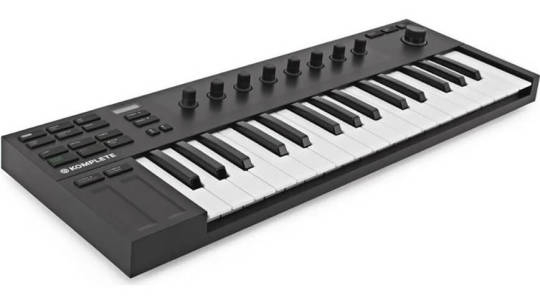
Compatibility: PC, Mac No of Keys: 32 Key size: Mini Key type: Velocity-sensitive Controls: Eight touch-sensitive control knobs, two touch strips, four-directional push encoder Connectivity: USB Power: USB Size: 47.5 x 16.7 x 0.5cm Weight (kg): 1.45kg The Komplete Kontrol A-Series is a USB 2.0 bus-powered keyboard that manages to squeeze 32 mini keys and the full complement of Komplete Kontrol controls into its tiny frame. It delivers almost the same functionality as the Komplete Kontrol S-Series (see below), making it an excellent mobile option for producers on the go. The Komplete Kontrol M32 replaced the pitch and modulation controls with a pair of short touch strips. Also, the controller is equipped with 8 capacitive knobs, a 4d encoder, as well as numerous buttons that are incomparable in their tactile sensations. All this provides a high comfort of control, working with the operating Maschine, as well as using the interface of your DAW. The OLED display and Smart Play features from the A-Series are also in place on the B-Series, allowing you to scale snap, chord trigger and arpeggiate with ease. As a regular MIDI controller keyboard, it also works with any other software. The mini keys were the only downside to this keyboard for us. We found that we could live with them after some getting used to them, so if you can live with them too, this is the best portable and affordable MIDI keyboard you can buy. 6. Korg microKEY2 Air-25
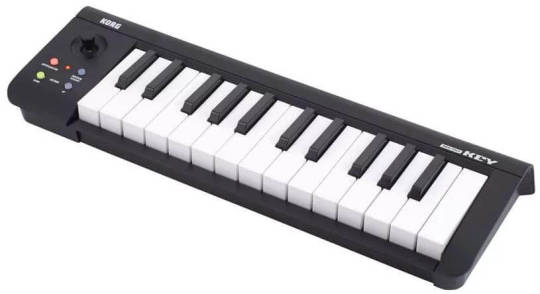
Compatibility: PC, Mac, iOS No of Keys: 25 Key size: Mini Key type: Velocity-sensitive Controls:Joystick, Arpeggiator button, Sustain/TAP button, Octave Shift buttons Connectivity: USB, Bluetooth Power: USB or batteries Size: 39.5 x 13.1 x 0.52cm Weight (kg): 0.67kg The line of microKey 2 Air midi keyboards is represented by 4 models depending on the number of notes: 25, 37, 49 and 61. Each works via Bluetooth communication. Power is supplied via AA batteries or via USB. If you're looking for a MIDI controller keyboard that's easy to set up and operate, the microKey 2 Air 25 is a great option. It may not have as many bells and whistles as some of its rivals, but it delivers on the basics, and plays far better than many other keyboards in its class. 7. M-Audio Oxygen 49 MKV

Compatibility: Mac/PC No of Keys: 49 Key size: Full-sized Key type: Velocity sensitive Controls: 8 velocity-sensitive trigger pads, 8 assignable knobs, 9 assignable faders, transport buttons Connectivity: USB, sustain pedal Power: USB Software: Ableton Live Lite, MPC Beats, Skoove and Melodics instrument learning, Air Hybrid 3 and Mini Grand instruments Dimensions (mm): 81 x 24 x 9 cm Weight (kg): 2.9kg The Oxygen 49 MIDI keyboard controller is a lower-priced alternative to the M-Audio Pro 49. It has a 3-segment LED display, instead of the OLED display on the Pro, and it has 8 back-lit red pads instead of 16 multi-coloured ones. However, it still provides access to 16 sound sources from the front panel when programming. The Oxygen 49 lacks a dedicated MIDI out port, but it does have other features that make it stand out from the crowd. These functions are mostly triggered via soft keys and via 'secondary modes' from the keybed itself. Read the full article
4 notes
·
View notes
Text
Hieraŭ mi aĉetis muzikilon)
Mi sentis ke estas bona ideo provi sin je muzikado, do mi mendis nemultekostsan MIDI klavaron "komplete kontrol m32" de Native Instruments kaj mi ĝojas pri tio. Post hieraŭa vespero mian tutan tempon okupas ne sukcesanta lud-provado.
Eble poste mi alŝutos iajn registraĵojn... Sed por tio mi nun necesas muzik-notojn. Ĉu vi konas kie mi povas ekhavi elektronikajn notojn senpage? Eble notoj de esperanto muziko.
Kun amo de senvivulo.
2 notes
·
View notes
Text
Liked on YouTube: Analyzing KRAFTWERK's BEATS - minimal DRUMS for maximum EFFECT | Drum Patterns Explained
Analyzing KRAFTWERK's BEATS - minimal DRUMS for maximum EFFECT | Drum Patterns Explained ► Support us and get access to lots of drum patterns, cheat sheets and more! https://www.patreon.com/captainpikant/ The evolution of electronic music like Hip-Hop and Techno can be directly traced back to one common ancestor: Kraftwerk. Join us on a journey through their best albums as we analyze the beats behind the minimalistic masterpieces. Featured drum patterns (transcriptions available on Patreon): Kraftwerk - Autobahn Kraftwerk - Radioactivity (Radioaktivität) Kraftwerk - Trans-Europe Express (Trans-Europa Express) Kraftwerk - The Model (Das Model) Kraftwerk - Spacelab Kraftwerk - The Robots (Die Roboter) Kraftwerk - Computer Love (Computerliebe) Afrika Bambaata & The Soulsonic Force - Planet Rock The Egyptian Lover - Egypt, Egypt Gear used: Synthstrom Audible Deluge Vector Synth Elektron Syntakt Hologram Microcosm Vermona DRM-1 MKIV Cyclone Analogic TT-78 Korg Monologue Behringer RD-8 Behringer RD-9 Dübreq Stylophone Beatbox Dübreq Stylophone Arturia Keystep Native Instruments Komplete Kontrol M32 ► Instagram https://ift.tt/xWmDup9 #kraftwerk #analogsynth #synthesizer #analog #drummachine #beats #electronicmusic Produced by Jean-Claude Dirckx and Sophie Hoppstädter via YouTube https://www.youtube.com/watch?v=2qhcp6iVWbw
0 notes
Text
Alyag - Interview & Studio Tour
Studio



Gear List
Line 6 - Helix LT
Universal Audio - Apollo Twin X Quad
MOTU - M4
SPL - 2Control
Genelec - 8040BPM Monitors
Native Instruments - Maschine+
Native Instruments - Kontrol M32
Novation - Launchpad X
SubPac - S2
Guitars (some modded)
Schecter - C-7 Hellraiser
Schecter - SLS Elite E-1
LTD - Alexi Laiho SE-600
Fender - Player Plus Stratocaster
Taylor - American Dream AD17e
Headphones
Slate Audio - VSX
Sennheiser - HD650
Mics
Aston Microphones - Origin
SE Electronics - DynaCaster
Aston Microphones - Starlight
Plugins
UAD, SSL Native, Plugin Alliance plug-ins
Xfer Serum, Synapse Audio Dune 3, Arturia Pigments, Sonic Academy ANA2 soft synths
Native Instruments Komplete 14 Ultimate, and more sample libraries than I care to admit
--
Interview
Who are you and what is your relationship with music?
My name is Alyag, and I'm a lifelong tune-tinkerer, multi-instrumentalist, music producer, and sassball extraordinaire, currently based in Victoria, BC, Canada.
I've been honing the craft of writing, performing, and producing original music since my early teens, and more recently learning how to actually build a business and a career through marketing and monetization.
My main background has always been in rock and melodic metal -- I've played in many a band over the years -- however, more recently I took up the mantle of fusing elements thereof with various genres of electronic dance music. Growing up, I'd always had a tremendous love for both, but the production elements in electronic music (specifically the sound design) had genuinely intimidated me. That is until about a half-dozen years ago when, utterly enchanted by the sights n' sounds of the Shambhala Music Festival here in BC, I'd felt called to take a serious crack at it... and haven't turned back since.
By day, I peddle fine instrumental and professional audio wares at a music store; by night (and every other available waking moment), I'm arranging noise into something that hopefully makes sense, and spreading its gospel across the Interwebz. I've made a humble but steadily increasing income from my creative spewings, via gigs / streaming / sales / sync licensing / etc, and certainly aim to make it a full-time thing at some point in the near-ish future.
I'd go absolutely bonkers were I not doing it, so for me music is literally the thing that gets me out of the otherwise inescapably cozy confines of bed in the morning.
Which piece of equipment in your studio is essential to your production process?
These days I'd say it's the Slate VSX headphones.
Since I'm not currently in a position where I can afford a dedicated studio space, being able to check my mixes in some of the most renowned control rooms on professionally tuned speaker systems, all within my headphones, has been absolutely game-changing, especially in terms of being able to trust that what I'm hearing will ultimately translate in any environment. And being able to do the infamous "car test" without actually having to go to my car is pretty handy.
Also, guitars. Couldn't do without at least one (or several) of those.
What is the most budget-friendly piece of studio gear that gave you the most results?
If we're talking bang-for-buck ratio here, I'd still say the Slate VSX. They aren't cheap headphones by any means, but when I think of the amount of money I've sunk into my monitoring environment over the years -- between speakers, room treatment, calibration software, a fancy speaker switcher/controller with built-in cross-talk emulation for headphone mixing, the headphones themselves, a Sub Pac, you name it -- the value I've gotten out of these particular headphones over the past year and a bit I've owned them has far surpassed anything I'd used previously, at a fraction of the cost.
Beyond that, I'm a big fan of less expensive gear that "punches up", if you will; stuff that is oft pitted against much more expensive brand products. For example, my favorite mic for anything acoustic or clean vocal is the Aston Origin -- relatively cheap when compared to the Neumanns and the AKGs of the world, but it's the one I always go for whenever I record any of that sort of material, just because I've always loved the unique character it would impart on the recording, and how little processing it would need after the fact to sit great in the mix. It's also quite forgiving on ambient noise, which helps when you're a bedroom producer with a less-than-perfect space.
I've also found that certain cheap, almost "throwaway" instruments for some reason can record inexplicably well compared to (or at times even better than!) their higher-end equivalents. And taking it further than that, the beauty of the amount of processing anyone with a DAW has at their disposal these days, is that you can take any recorded signal and transform it into something so much more than it once was in endlessly creative ways... so it really isn't necessary to have all of the best stuff to make great tunes. I'm a firm believer in the concept of, "good enough", rather than ceaselessly chasing better and more expensive gear.
Walk us through your process for creating and producing music.
Every tune is different, and while I do try to mix things up every once in a while (starting with drums or a bassline instead of a melody, for example), I'm always open to where a new idea might spark.
Sometimes it could be as simple as flipping through presets in a new plug-in when something clicks; sometimes it could be a cool arpeggio stumbled across by happenstance by fretting the guitar in some unusual way; other times a random melody will pop into my head, and I'll try to map it out either on the guitar, or directly via MIDI in Ableton, and build on it from there.
A lot of my catchier tunes will typically start in the latter way, with a couple having even come to me in a dream... which is always a rare and precious moment followed immediately by my frazzled half-awake self scrambling out of bed and toward the computer to try to somehow capture the damn thing before it completely dissolves into the ether.
What is a production technique that you always come back to?
I don't know if I'd necessarily call it a technique so much as a preferred method, but I've never gotten out of the habit of programming all my drums entirely by hand via clicky-mouse -- as in, I literally write in every single note and adjust its velocity with the pointer.
Sure, I have drum pad controllers I could use to actually play in the percussive parts, but I've done it this way for so many years that it's just faster and somehow more efficient for me. It doesn't matter if I'm making melodic death metal or electronic dance music; the method is exactly the same, just the samples are different.
How would you explain your style?
Historically I've referred to my tunes as an eclectic amalgamation of Electro-Psy-Funk-DnB-nuDisco-Trance-Metal, which is a bit of a mouthful, hah. Thus far it's the best way I've come up with to describe my noise making antics, as they very much are as cohesive a blend of all of those conventionally-rarely-seen-dancing-together elements as I can possibly muster. Being a tremendous fan of a plethora of highly varied genres and styles, I've never been keen on pigeon holing myself into any particular one, rather opting to fuse together as many of my favorites as possible.
That being said, I'd say a fairly accurate (as I imagine it) explanation for my music would be the soundtrack to a high-stakes hover car race in a dystopian future cityscape whilst in the midst of a legendary boss battle.
What’s your biggest struggle?
Ironically, being the jack of all yet master of none in terms of niche genres makes it very difficult to appeal to curators or even labels that specialize in specific styles of music.
Often times if I try to pitch my stuff for promotion, I'll get feedback citing that it's too much of one thing and not enough of another (namely the one that they specialize in), and thus it doesn't quite fit their mold... which is precisely why I've remained 100% independent with all of my releases to date (with the exception of a couple of collaborations with other artists on their labels).
The benefit thereof, however, is that I retain all the rights to and creative control over my work, so I don't have to cater to anyone or anything other than my zany imagination.
Has building a hardware setup changed your perspective on music or life in general?
I actually do most things "in the box", and own very little hardware, as I'm pressed both for budget and space.
If anything, I've been trying to simplify my setup more and more over the years, downsizing quite a bit from what I'd used to have. For example, instead of a hefty studio rack, I now do everything on the Apollo Twin; in place of a gargantuan tube guitar amp, all my tone comes from the Helix floorboard; and instead of a band, I have my laptop, hah.
So I suppose that if I've drawn any life lesson parallels here, is that the simpler the better (at least for my own peace of mind), and the less I have to cart around to gigs and such.
One tip on how to spark creativity?
I think creativity is akin to a muscle -- exercised regularly, it grows stronger and more efficient; left to stagnate, it atrophies. So based on that analogy I'd say the most important way to maintain it is to keep doing creative things, even if only a little bit each day. Taking that same analogy a tad further, there have been studies in physical fitness that show that one receives the same amount of health benefits from light daily exercise as they do from a couple of heavy work-outs with longer periods of recovery in-between. Which is to say that, even shorter bouts of creative output multiple times a week will likely yield similar amounts of progress as one solid day of continuous flow.
And here's the thing: in the context of, say, an independent music producer who already wears many hats in the writing/engineering/producing/releasing/marketing process, creativity doesn't just mean making music. It could pertain to making a social media post; writing an email to your mailing list; updating the bio on your website; designing new merch; creating ancillary video content that delves into the production story of your new release; answering questions in an in-depth interview (ahem) -- you name it -- it's all a form of creativity... and at the end of the day, as a creative person, all of those many ways amount to flexing that muscle.
The goal is merely to keep doing the things.
A book, movie, article, or album that has inspired you?
"The War of Art", along its follow-up, "Turning Pro" by Steven Pressfield are a absolute must-reads for any creative.
Relatively quick reads, but the sense of creative empowerment and drive they instill in you cannot be understated.
Where can people find more of your music and connect with you online?
Official Website
Bandcamp
Spotify
SoundCloud
Facebook
Instagram
--
In Case You Missed It
47 - Generative Ambient
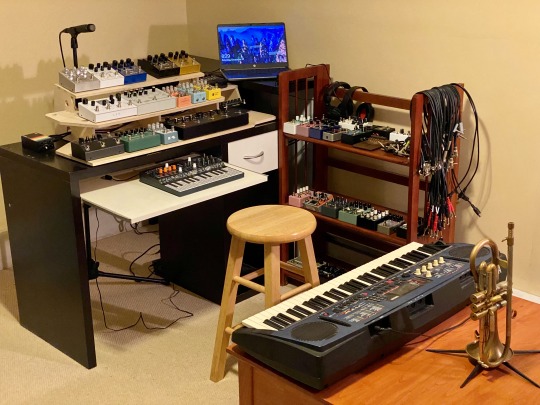
--
Friends, this is a past issue from the G.A.S. Newsletter. Every Tuesday and Friday a new artist is featured.
#studiotour#producerlife#musicstudio#homestudio#mystudio#producer#musicproducer#synthesizer#soundengineer#sounddesigner#beatmaker#musician#eurorackmodularsynth#eurorack#electronicmusic#gasnewsletter
0 notes
Photo

Native Instruments M32 Komplete Kontrol Minikey Controller and 2 new Komplete Audio Interfaces #synthjam #synth #wnamm #winternamm2019 #namm #studio #live #synthesiser #synthesizer #analog #digital #producer #edm #music #nammshow2019 #nammshow #nativeinstruments #m32 #minikeys #controller #komplete #kontrol #kompletekontrol #audio #interface @nativeinstruments https://www.instagram.com/p/BtBPyZpBcjm/?utm_source=ig_tumblr_share&igshid=hftp2i65nyvs
#synthjam#synth#wnamm#winternamm2019#namm#studio#live#synthesiser#synthesizer#analog#digital#producer#edm#music#nammshow2019#nammshow#nativeinstruments#m32#minikeys#controller#komplete#kontrol#kompletekontrol#audio#interface
1 note
·
View note
Video
vimeo
BEATCLUB x NATIVE INSTRUMENTS from Peter Tomaszewicz on Vimeo.
A promo animation for the collaboration of BEATCLUB, Timbaland’s new marketplace with Native Instruments and the launch of 150 limited edition KOMPLETE KONTROL M32’s.
Direction, design and animation: Peter Tomaszewicz Music: Timbaland - Take Your Clothes Off feat. Missy Elliot
0 notes
Text
youtube
Ambient Buddhism DJ MIX March 23 ,2024 by TAKEO SUZUKI | Japanese ambient music , Buddhism
DJ MIX video of ambient music using DAW Logic Pro X on March 23, 2024 on YouTube. The ambient sound is used to create a chill-out sound with a DJ MIX play that does not require dancing. Recommended for meditation and mental concentration.
Equipment DAW : Apple Logic Pro X 10.8.1 Apple M1 MacBook Air ZOOM AMS24 Native Instruments KOMPLETE KONTROL M32
The tracks used in this mix can be downloaded from bandcamp.
#youtube#bandcamp#takeo suzuki#japanese#ambient music#buddhism#japanese ambient music#ambient buddhism#healing music#meditation#Bandcamp
1 note
·
View note
Video
vimeo
BEATCLUB x NATIVE INSTRUMENTS from Peter Tomaszewicz on Vimeo.
A promo animation for the collaboration of BEATCLUB, Timbaland’s new marketplace with Native Instruments and the launch of 150 limited edition KOMPLETE KONTROL M32’s.
Direction, design and animation: Peter Tomaszewicz Music: Timbaland - Take Your Clothes Off feat. Missy Elliot
0 notes
Link
0 notes
Photo
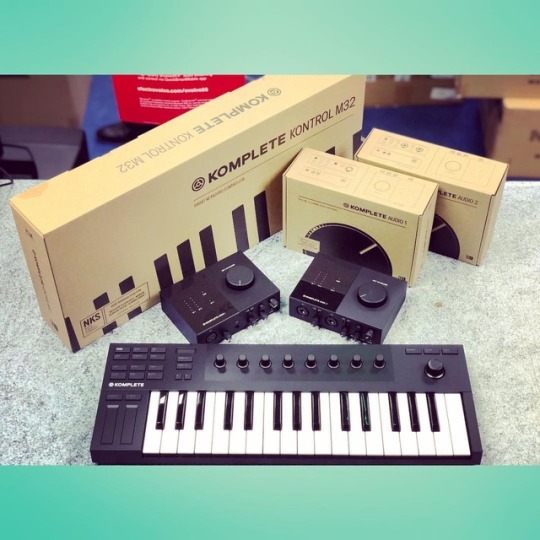
FINALLY! We had a delay to our order, but the latest products from the Native Instruments Komplete selection are now with us! ➡️ Komplete Kontrol M32 - Compact USB MIDI Keyboard ➡️ Komplete Audio 1 - 1 mic + 1 instrument input compact USB audio interface ➡️ Komplete Audio 2 - 2 mic/line/instrument input compact USB audio interface All now available in-store or via our website. . . . . . #nativeinstruments #komplete #kompletekontrolm32 #midikeyboard #kompletekontrol @nativeinstruments #kompleteaudio #producer #studiolife #producerlife #musicproducer #homestudio #instamusic #makingmusic #musician #recording #recordinggear (at Knight Sound and Light) https://www.instagram.com/p/BvJx62aAPNF/?utm_source=ig_tumblr_share&igshid=1qq21m2flko3
#nativeinstruments#komplete#kompletekontrolm32#midikeyboard#kompletekontrol#kompleteaudio#producer#studiolife#producerlife#musicproducer#homestudio#instamusic#makingmusic#musician#recording#recordinggear
0 notes
Text
First things first, what took you so long?
My first attempt at purchasing the Maschine MK3 was back in 2017 but they didn’t have any stock so I was refunded. I saw that moment as a sign because my Maschine MK1 was still operational and also I didn’t see much differences until 2020 when I finally got my hands on the MK3.
Packs quite a punch
The Maschine MK3 is a big step up from any of its predecessors because it contains so much much than you could imagine which makes it a contender for future proofing your workflow. Here’s a list of the standout features;
2 high-resolution RGB colour displays for precision sample slicing, sound tweaking, note editing, mixing, browsing, and more
Pro-grade, 96 kHz / 24-bit audio interface with 2 x ¼” TRS line outputs, 2 x ¼” TRS line inputs, ¼” dynamic mic input, stereo headphone output, 1 x MIDI In, 1 x MIDI out; 1 x Footswitch
8 touch sensitive knobs for parameter tweaking
Smart Strip for strumming notes, pitch bending sounds, performing with FX, and more
Four-directional push encoder for browsing, navigating, adjusting levels and balance
Powered via USB 2.0 or with the included 15V 1.2A power supply unit
Worlds apart
It’s a huge step up from my MK1 and can do so much more like become a control surface for Logic Pro X. Perhaps the best investment I’ve ever made as the workflow is so quick, especially when you can adjust level of the channel from the hardware controller without looking at the screen; all you do is press the Mixer button and twist the corresponding knobs that you want to adjust. At first I found it difficult to get used to it as I was using the Komplete Kontrol M32 but a few weeks in and I’ve discovered the Tap Tempo button and all is well. My next frontier at some part is the touch strip.
youtube
Going forward
Since my MK3 journey began I haven’t really used the M32 much, I’ve also partnered it with the Novation Launchpad Mini -since it is now recognised as a control surface for LPX’s new clips feature. I’ve been doing the most in regards to Twitch streams and I gotta admit that its fantastic to watch back and analyse my workflow. It just simplifies everything. Tune in sometime or follow the highlights of my live broadcast shenanigans on my YouTube and IGTV.
This slideshow requires JavaScript.
Native Instruments Maschine MK3 Since upgrading to the MK3 my workflow has gotten much more intuitive and it can also control Logic Pro X and Ableton Live. @ni_news #tech #music First things first, what took you so long? My first attempt at purchasing the Maschine MK3…
0 notes
Text
Native Instruments Komplete Kontrol M32 review
Native Instruments Komplete Kontrol M32 review
U-Rock Newspaper
musicradar.com – As impressed as we were by Native Instruments’ A-Series keyboards for Komplete Kontrol, our one criticism of the range was that the smallest – the 25-key A25 – was too bulky to be considered truly po…
Tweeted by @NI_News https://twitter.com/NI_News/status/1138758886410919937
 {$excerpt:n} Source: U-Rock Newspaper
View On WordPress
0 notes